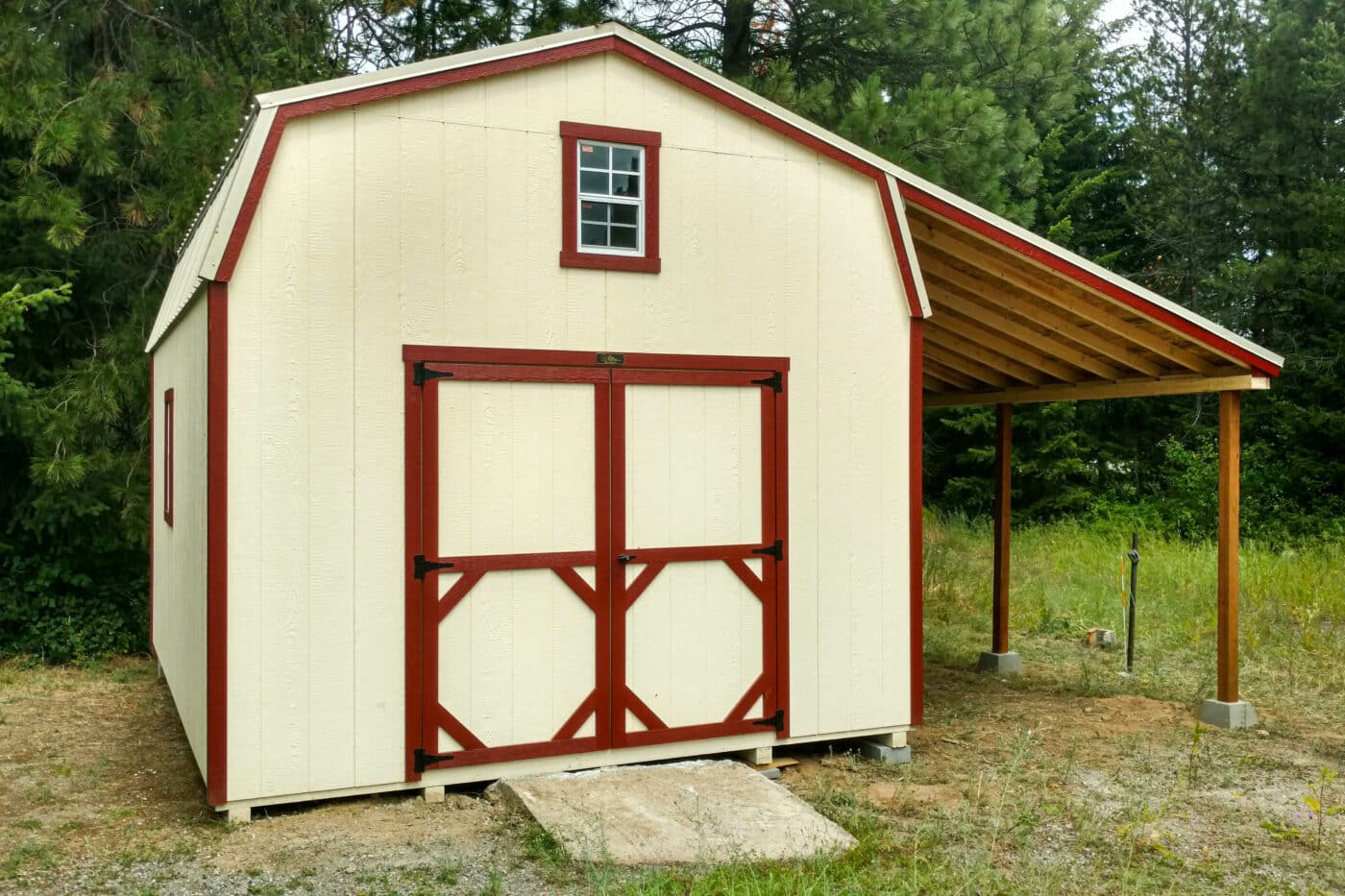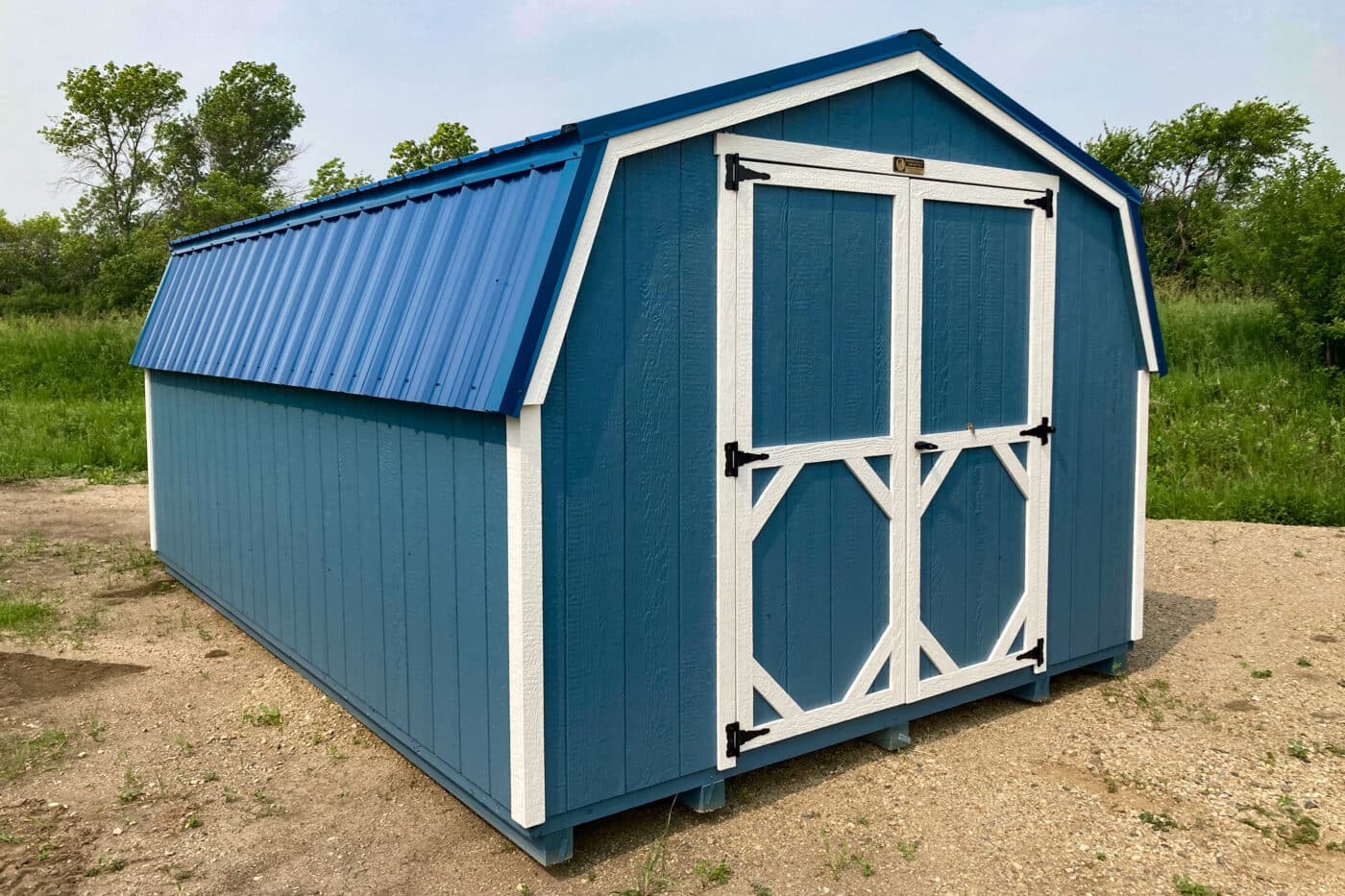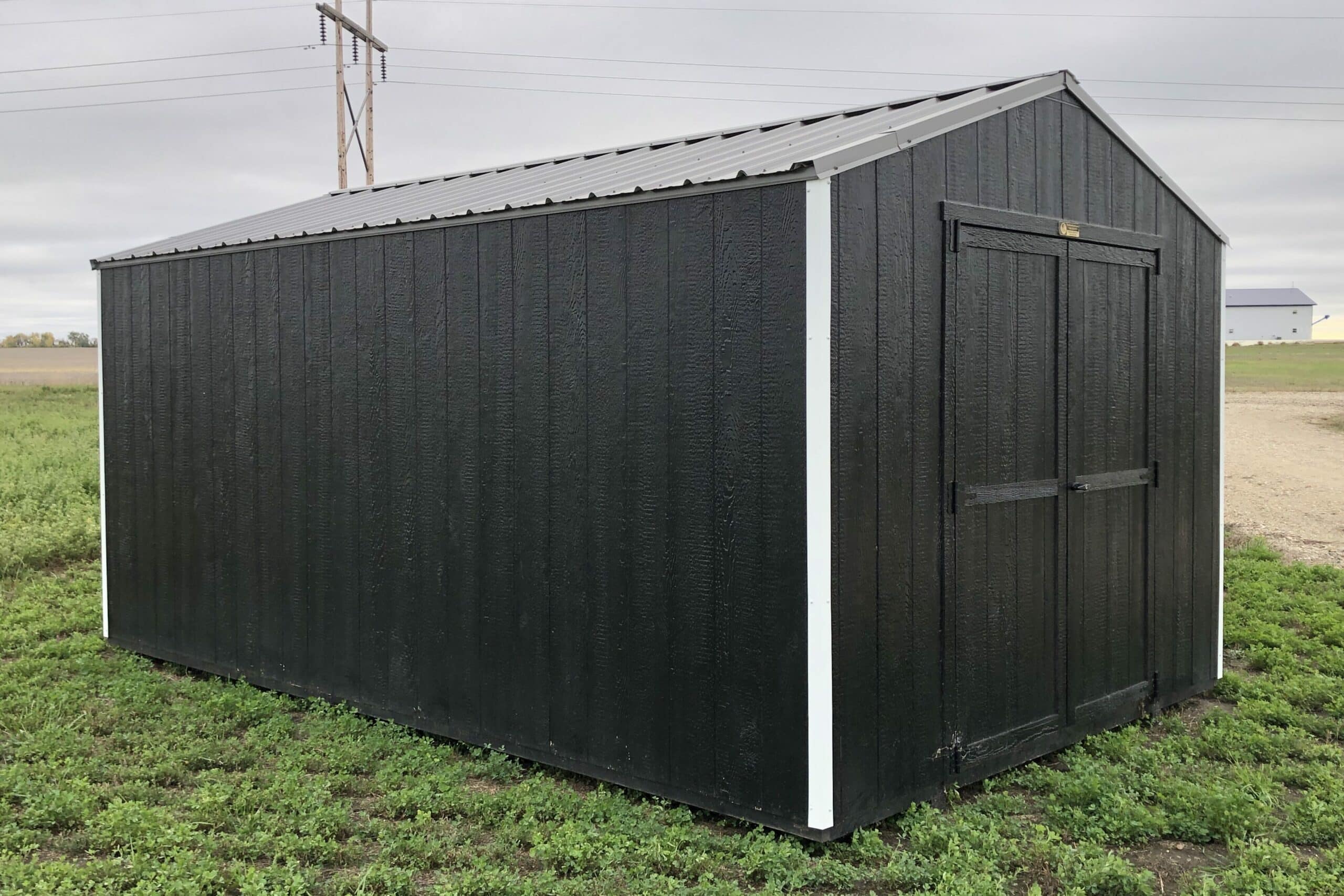Shed Permits in Washington: A Comprehensive Guide

Building a new shed can be an exciting project. You can get additional storage space, a garden shed, or even your own workshop. However, the excitement can turn sour when obtaining a shed permit for your project. Navigating local building codes, understanding zoning regulations, and dealing with various administrative hurdles can turn a straightforward project into somewhat of a challenge.
We want to make getting the storage space you need simple and exciting. That’s why this guide breaks down everything you need to know about shed permits in Washington state. Here’s what we’ll cover in this article:
- Answers to common questions about shed permits
- Shed permit regulations for all counties and some cities in Washington state
- Other information you may want to know about shed permits in Washington state
What Is A Shed Permit?

A shed permit is an official document you need to get before you can build, install, or change a shed on your property in Washington State. It’s essentially a way for your local government to certify that the shed you plan to build follows their rules and regulations. This includes meeting local building codes, zoning regulations, and safety standards. In simple terms, a shed permit is like a building permit but focuses specifically on the requirements for sheds.
Do You Need A Permit To Build A Shed In WA?

You will need a permit to build a shed in Washington if the projected roof area is over 120 square feet, it is more than one story, it’s attached to a house or other building, or it is near an environmentally critical area (ECA).
What Are The Rules For Sheds in Washington State?

Outlined below are a few factors that might influence whether you need a permit or the types of permits you’ll need to obtain before constructing your shed:
Size and Height
The exact size and height requirements will vary between counties and cities within the state of Washington. However, the general guideline is that sheds with a roof area of over 120 square feet that are higher than one story will typically require a permit.
Location and Placement
Depending on where you reside in Washington State, the exact rules for the location and placement of your shed may differ. Typically, you must obtain a permit if you plan to attach the shed to your house or other building or if it is being placed near an ECA.
Sheds must also be set back a certain distance from property lines, usually about 3 to 5 feet, although this will also vary depending on your local jurisdiction’s rules and regulations. For example, in Seattle, the setback requirement is 5 feet from the side and rear property lines, but this is often larger in more rural areas.
Intended Use
As the tiny home trend increases in popularity, many people want to convert their shed into a living space. In Washington, if you plan to reside in a shed as your permanent residence, it must be converted to meet residential building codes and requirements. It will likely require a typical building permit rather than a shed permit.
Electrical and Plumbing
A separate permit will be required if you plan to include any utilities such as plumbing, electrical, or mechanical setups.
How Big Of A Shed Can I Build Without A Permit in Washington State?

The biggest sized shed you can build in Washington state without a permit is one with a roof square footage of 120 square feet, no taller than one story.
How Do I Get A Shed Permit in Washington?

- Check Local Building and Zoning Codes
Before you get a shed permit in Washington, you’ll need to find out what your local jurisdiction requires to obtain a permit. That way, the plans for your shed that you submit with your application will be approved. Below is a list of resources for local jurisdictions across the state of Washington so you can find out the requirements for a shed in your area.
- Prepare Site Plan
Now that you have an understanding of the requirements for building a shed in your area, you can draft a site plan in accordance with your local regulations. Most localities require you to show where you’ll place the shed on your property, the shed’s measurements, distances to property lines and other structures, and any other easements. You may also need to include details about the materials you plan to use, the shed’s dimensions, and the type of foundation you plan to use. Prepare this before you start filling out the permit application to easily include it when the time comes.
- Complete the Permit Application
Now that you know if your shed requires a permit and you have your site plan together, you can begin filling out the permit application (if your shed requires one). You can typically fill one out on your local building or zoning department’s website, but you may need to visit them in person to get the application.
You’ll also need to attach the shed plans, proof of ownership, or HOA approval if required. Once all this is done, be sure to pay the associated permit fees.
- Submit Your Application
Now that your application is complete, it’s time to submit it for approval. If the application is online, you can submit it there, but you may need to visit your local building department to deliver the application in person if required.
Once submitted, it will take a few days or weeks for your local government official to review the document, ensure that your shed meets all the requirements, and give you their stamp of approval.
- Schedule Inspections
Some municipalities will require inspections to ensure that the construction of your shed follows the approved site plans and still adheres to regulations and safety standards. A final inspection may also be required to ensure the shed has been completed per the approved plans.
- Obtain Your Permit and Begin Construction
After receiving approval on your permit application, you can begin construction.
- Post-Construction Requirements
Once you have passed the final inspection, you may get a certificate of completion to display, indicating that your shed has met all the necessary requirements.
Local Shed Permit Resources

Shed Permits in Washington Requirements By County
Below is a list of resources to help you determine the shed permit requirements in your county. These include the proper government body to get in contact with, building and zoning regulations, and an online application and fee schedule if they are available online.
Shed Permits in Washington State By City
| Bellevue | Bellevue Accessory Structures Bellevue Building Permit Requirements |
| Everett | Everett Permit Services Everett Regulations For Accessory Buildings |
| Kent | Kent “Do I Need A Permit?” Kent Permit Center |
| Othello | Othello Building & Planning Department |
| Prosser | Prosser Building Department Prosser Building Permits |
| Renton | Renton Shed/Garage Handout |
| Seattle | Seattle Sheds |
| Spokane | Spokane Accessory Structures |
| Spokane Valley | Spokane Valley Residential Building Permits |
| Tacoma | Tacoma Residential Garages and Sheds |
| Yakima | Yakima Permits |
Do You Need A Shed Permit in Bellevue, Washington?
A permit is only required in Bellevue, Washington if the square footage of your shed is 200 square feet or more. Your shed must also be at least 10 feet from street right of way, access easement, or private road. It must be set back 5 feet from side and rear property lines and can not be taller than 15 feet as well.
Do You Need A Shed Permit in Everett, Washington?
A permit is not required in Everett, Washington, if your shed’s floor area is less than 200 square feet.
Do You Need A Shed Permit in Kent, Washington?
One-story sheds do not need a permit if the floor doesn’t exceed 120 square feet for non-residential use and 200 square feet for residential use.
Do You Need A Shed Permit in Othello, Washington?
Yes, a shed permit is needed in Othello, Washington, if the shed you plan to build or alter has a floor area greater than 200 square feet.
Do You Need A Shed Permit in Prosser, Washington?
A permit is not required in Prosser, Washington, if the shed’s floor area is less than 200 square feet and they meet all Benton County setback requirements.
Do You Need A Shed Permit in Renton, Washington?
You will need a shed permit in Renton, Washington, if the floor area is larger than 200 square feet.
Do You Need A Shed Permit in Seattle, Washington?
You don’t need a permit in Seattle, Washington, if your shed meets the following requirements: its total roof area is 120 square feet or less, it’s a single-story building, it sits on a concrete slab, pier blocks, or soil, it’s not attached to a house or other building, it’s not near an ECA, and it’s only used for storage, gardening, etc.
Do You Need A Shed Permit in Spokane, Washington?
Residential accessory structures such as sheds are exempt from permit requirements in Spokane, Washington, if they are only a single-story and are less than 200 square feet.
Do You Need A Shed Permit in Spokane Valley, Washington?
Yes! A permit is typically required for sheds larger than 200 square feet.
Do You Need A Shed Permit in Tacoma, Washington?
You will need a permit in Tacoma, Washington if the structure is larger than 200 square feet.
Do You Need A Shed Permit in Yakima, Washington?
Sheds under 200 square feet do not require a building permit in Yakima, Washington.
How Long Does It Take To Get Shed Permits in Washington State?

A straightforward shed permit can take anywhere from a couple of days to weeks, while a more complex project that requires zoning variances or environmental reviews can take longer. The time it takes to get shed permits in Washington will vary depending on your local jurisdiction. Some may have resources at their disposal that allow them to move the review process along quicker than others.
What Is The Penalty For Not Getting A Shed Permit in Washington?

The exact penalty you may face for not getting a shed permit in Washington will vary depending on location. However, here are some common penalties you may face for failing to comply with building codes or zoning regulations:
- Fines and Penalties: If you fail to obtain a shed permit in Washington when required, you may face fines that range from a couple hundred to a few thousand dollars. Some jurisdictions may even send daily fines until the shed is permitted.
- Stop-Work Order: The construction of your shed may be ordered to be stopped until you obtain the required permits.
- Order to Remove or Modify: You may also have to remove or modify your shed to meet local building codes. This can lead to added costs for your project.
- Impact on Property Value and Sale: If your shed is unpermitted, you may have trouble closing the sale of your home until you can prove that it is permitted and up to code.
- Liability & Insurance Issues: If your shed is unpermitted, and something were to occur, your insurance claim may be denied, and you will be liable for any damage.
- Legal Actions: In extreme cases, your local government may take legal action to enforce compliance, resulting in legal fees and court costs.
Other FAQS

Do I Need A Permit To Run Electricity To My Shed in Washington State?
Yes, the state of Washington requires you to get a separate permit to run electricity to your shed.
Can I Live in A Shed in Washington?
You can live in a shed so long as you comply with their residential building code and convert your shed into what is considered a habitable dwelling. It’s essential to check with your local jurisdiction to see what they allow.
Interested in living in your shed? Check out our prestige sheds or read our blog on 15 unique finished shed house interior ideas.
How Long Does A Building Permit Last in Washington?
Typically, a building permit lasts for 6 months, and within this time, you must begin construction on your shed. If you don’t make any progress on the shed or need to halt construction for 6 months or more, you will need to request an extension. If you do not request an extension and no progress is made on the shed for 6 months or more, your permit will expire.
Building A shed In Washington?

The Shed Center is here to assist you at every stage of your shed project. Whether you need help with shed permitting questions, designing or building a shed, we can help you get the job done. Contact us with any questions, begin building your shed in 3D, or explore our shed lines to get started.
Ready To Build Your Dream?

